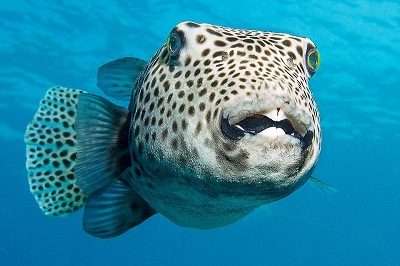A team of Australian and Japanese researchers have discovered a new species of sunfish in New Zealand waters, which is being claimed to be the first sunfish species be discovered in the past 130 years. Researchers say this fish managed to escape taxonomy records for almost three centuries. Researchers who took part in this study were from the University of Murdoch, Te Papa, the University of Tokyo, and Hiroshima University.

Sunfish are odd-looking creatures and the heaviest of all bony fishes. They can grow about 3 meters in length. Generally they are about 1000 kg in weight but some big sunfish can have a weight of over 2000 kg. In appearance, they look like a cross between a giant pancake and a suitcase with wings. They are solitary in nature and prefer to live at great depths in the oceans. This is the reason why very few sunfish are spotted by fisherman or researchers in oceans. The last time a new sunfish species was identified was about 130 years ago. This sunfish was Southern ocean sunfish, called Mola ramsayi.
According to researchers, the new species of sunfish discovered is very different from other sunfish species. It is different from others physically as well as genetically.
Researchers have named this fish as Hoodwinker sunfish or Mola tecta. The word tecta in Latin means hidden. Researchers say this fish prefers to live in the cold waters of New Zealand, South Africa, southern Chile, and the south-east coast of Australia.
Study lead author Marianne Nyegaard from Murdoch University said that the “new species managed to evade discovery for nearly three centuries by ‘hiding’ in a messy history of sunfish taxonomy, partially because they are so difficult to preserve and study, even for natural history museums,”
“That is why we named it Mola tecta (the Hoodwinker Sunfish), derived from the Latin tectus, meaning disguised or hidden.”
Nyegaard reveals that when she was studying the population genetics of the Southern ocean sunfish a few years ago, she could notice a genetic difference in the skin samples collected by fisheries in Australia and New Zealand.
According to Nyegaard, it was a Japanese research team that had first found genetic evidence of an unknown sunfish species in Australian waters 10 years ago. However, the fish “kept eluding the scientific community because we didn’t know what it looked like.”
Researchers then started a study to investigate further about these mysterious genes, and this study continued for more than four years. At that time, the team had only a few pictures of this creature that were captured by some fishermen.
“Early on, when I was asked if I would be bringing my own crane to receive a specimen, I knew I was in for a challenging – but awesome – adventure,” says Nyegaard.
The team then started their search for a living example of this creature in Indo-Pacific waters. One day, in May 2014, Nyegaard received a message from a New Zealand fishery about a dead sunfish. This fish had washed up on the shores of Christchurch. Nyegaard was in Perth at that time. She took a flight and reached Christchurch to see the fish herself.
Nyegaard told ScienceAlert that a local artist took her on a car to the beach in the middle of the night, and “he shone the car headlights on this fish.”
“The puzzle became a picture.”
To confirm that they had found a new species, the team collected 27 samples from stranded sunfish. They read old records from 16th century about such creatures and finally reached the conclusion that they have finally found Hoodwinker sunfish that had managed to escape the taxonomy records for 300 years.
The DNA samples of these Hoodwinker sunfish were also sent to other experts and labs that confirmed that it was a new species of sunfish.
Nyegaard and her teammates now want to investigate the feeding habits and distribution patterns of Mola tecta with the help of satellite tagging.
Te Papa fish collection manager Andrew Stewart says this discovery demonstrates that it is possible to find new, interesting things at quite obvious places.
“Most new things that we find are small, or they live in dark holes at the back of reefs,” Steward told Sunday Morning.
“They’re just mind-blowing when you see them” Stewart said.
“Here’s something that lives right in front of us, and we just had [it] literally washing up on the beach in good numbers, and yet we hadn’t recognised it.”
The new sunfish has been permanently housed in the National Fishes Collection at Te Papa.
“It’s quite humbling to know that the ocean still holds so much mystery,” Nyegaard told ScienceAlert. “We tend to think that we know everything, but we still have so many mysteries to unravel.”
The detailed information about the new sunfish species has been published in the Zoological Journal of the Linnean Society.